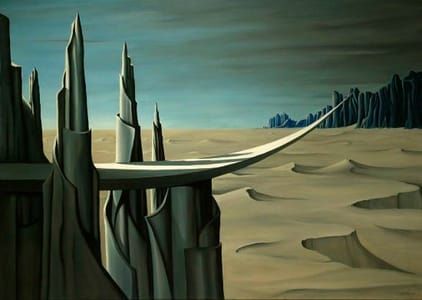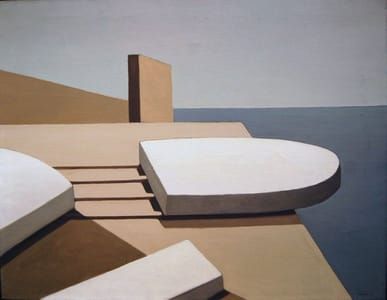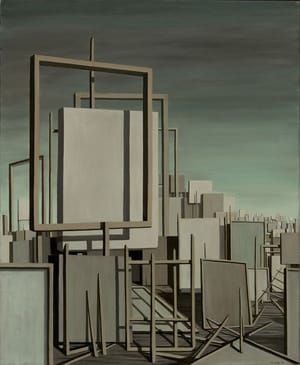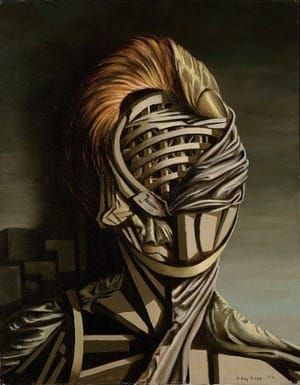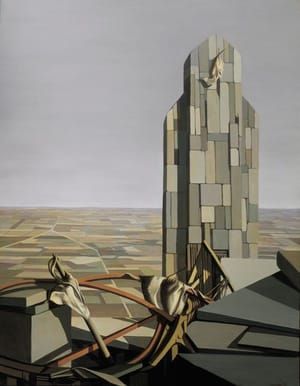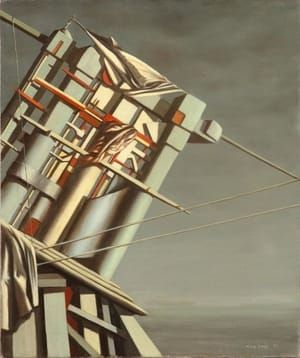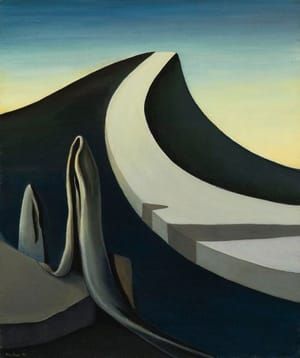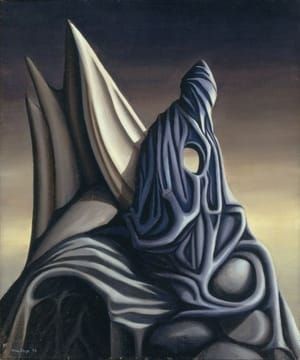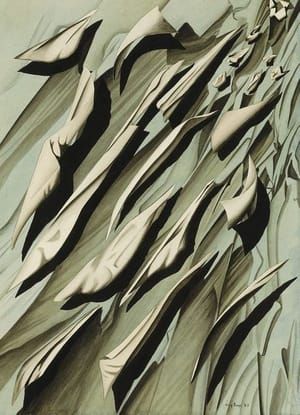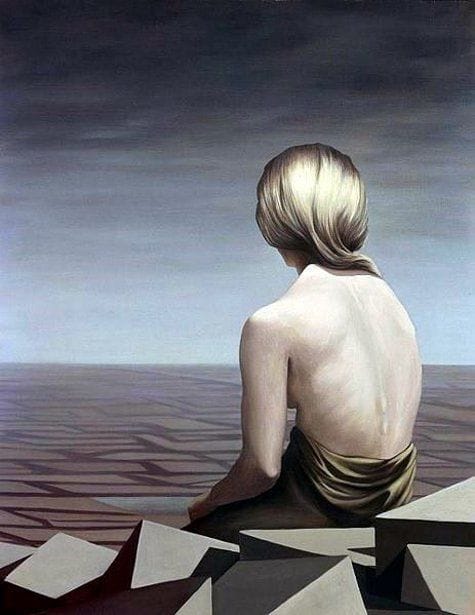

Le Passage, 1956
Kay Sage
Tanguy’s sudden death in 1955 was followed soon after by Sage’s development of cataracts, causing her to retreat from society and sink into depression. Her misery is evident in the last self portrait she painted, Le Passage (1956), which shows the artist from the back, sitting on sharp, angular rocks, looking out into a barren landscape.
Her growing blindness made her fear that she would not be able to paint again, a fear reflected in her work of that time, such as The Answer Is No (1958), whose subject is numerous blank canvasses and empty easels. Because she could not paint as she used to, she also wrote poetry during the late 1950s and early 1960s. Her poems contained grim imagery like that of her visual art. In 1959 she attempted to commit suicide. The following year she was encouraged to go on by a retrospective exhibition of her work held at the Catherine Viviano Gallery in New York. She also worked diligently to catalog Tanguy’s works, which resulted in the publication of his catalogue raisonné in 1963. In the last years of her life, she created assemblages made from stones, wire, glass, wicker, and other objects. Despite that resurgence in creativity, she remained depressed, and in 1963 she killed herself.
(https://www.britannica.com/biography/Kay-Sage)
Le Passage, one of Sage’s last paintings, is perhaps the only one containing a definite human figure... (https://en.wikipedia.org/wiki/Kay_Sage)
Uploaded on Feb 19, 2017 by Suzan Hamer
Kay Sage
artistArthur
Wait what?
